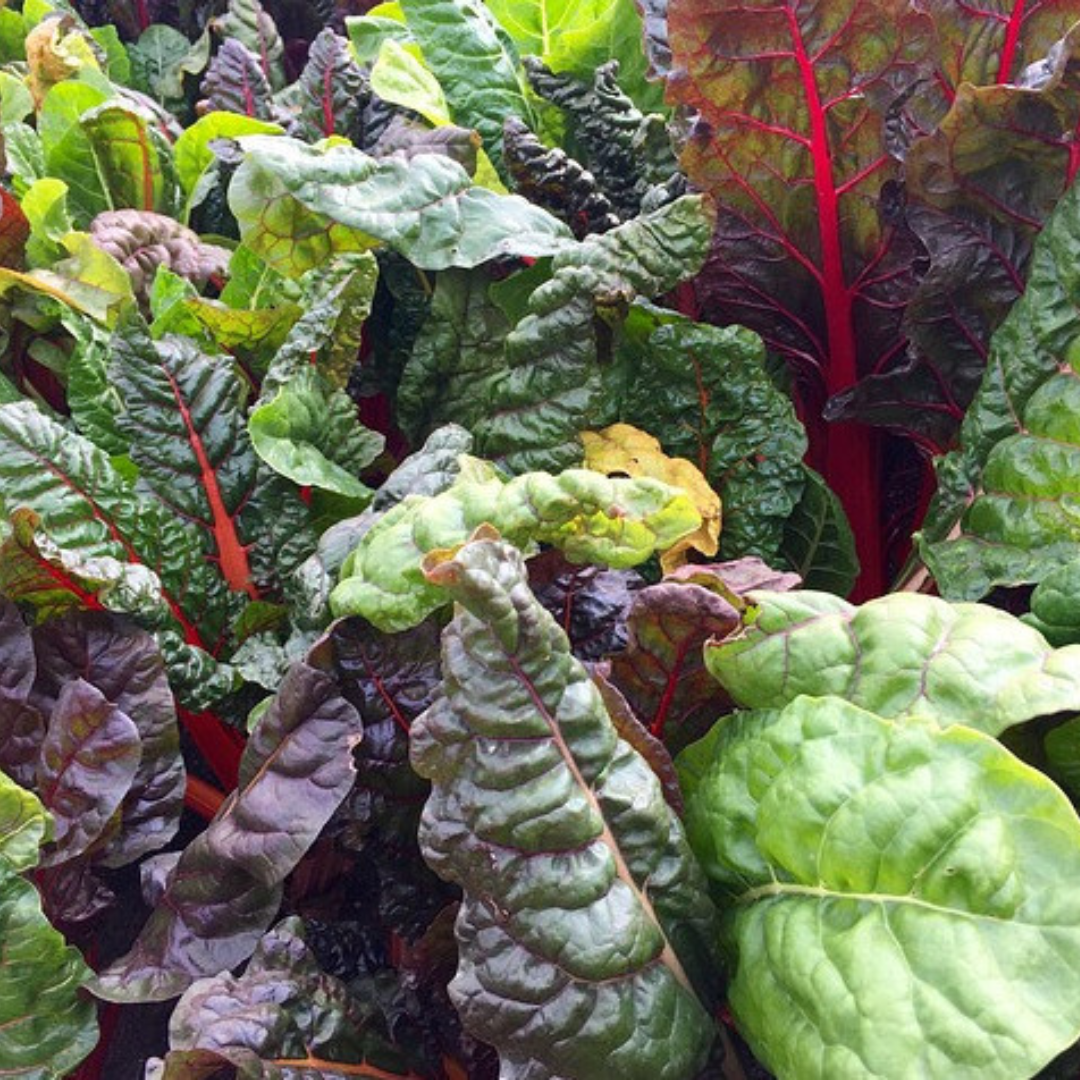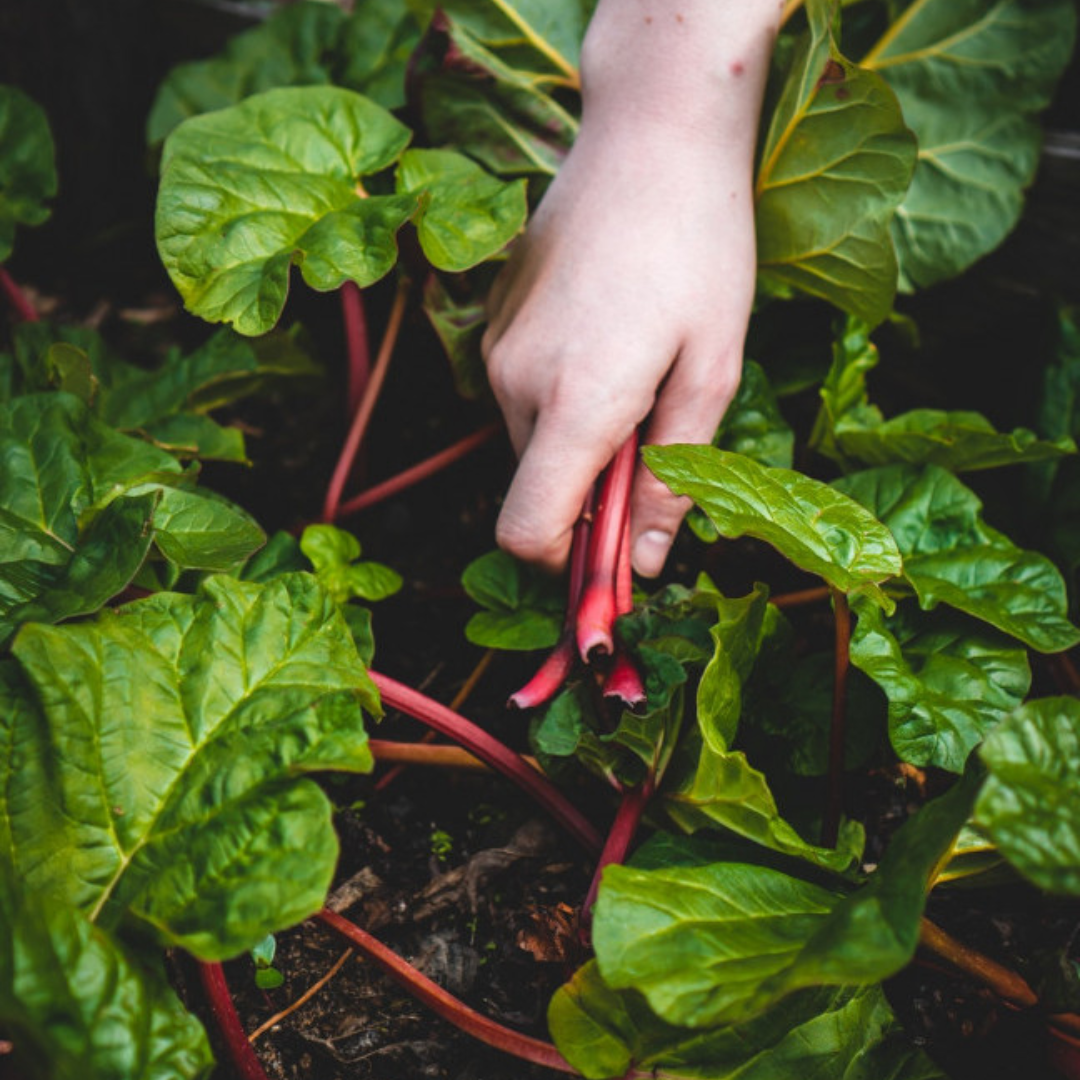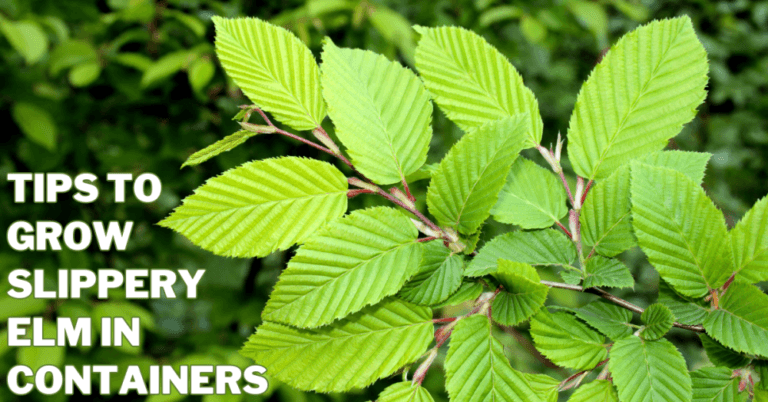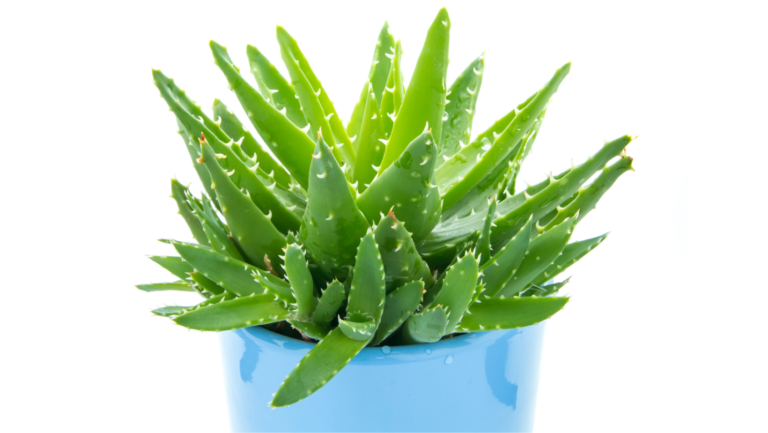9 Best Steps To Growing Swiss Chard In Containers
9 Best Steps To Growing Swiss Chard In Containers
Chard is a beautiful and versatile vegetable with glossy leaves and gleaming leaf stems that make it appealing to the eye and delicious to eat.
Tender young leaves give a pop of colour to salads, while larger leaves can be cooked like spinach, and their crisp leaf stems add a splash of colour to stir-fries.
If you sow in July, you'll have chard leaves to pluck all through the fall and winter. Plant them as a leafy centrepiece with some low-growing edible flowers or a few trailing herbs, and you'll have a beautiful container with a decorative appeal that no one will guess is also a kitchen garden.

History & Origin Of Swiss Chard
Swiss chard is a beet-like biennial that can withstand freezing temperatures. It is a southern European native that is far older than the beet.
It is thought to have evolved from a wild beet thousands of years ago. Chard comes in various colours, including white, yellow, and dark green. Around 350 BC, Aristotle cites red-stalked chard.
Swiss chard has been grown as a vegetable crop and a decorative plant. It was brought to America by colonists who thought it was just another type of beet farmed for its greens.
It was included among the beets in 1848. “This is a hardy biennial plant, with leaves larger than the red beet, and very thick and succulent,” it was written.
It is native to the Spanish and Portuguese shores. It is only grown in gardens for the leaves, which are used as spinning or added to soups.
The midribs and stalks of the great white or sweet beet are prized for being removed from the lamina of the leaf and cooked and eaten as asparagus under the name of chard.
The magnificent white or Swiss chard, which has only been in our nation for a few years, has a high character and is highly regarded by those who have cultivated it.
Nutrition Facts Of Swiss Chard
It's appreciated for its capacity to grow in poor soils and low water and light requirements. Although its name suggests it originated in Switzerland, Swiss chard is a Mediterranean vegetable.
Swiss chard comes in various colours and veins, with some having bright, jewel-toned stems and veins that make this vegetable appealing to the eye. Its leaves and stalks contain many vitamins, minerals, and potent plant chemicals.
Just 1 cup (175 grams) of cooked Swiss chard has:
- Calories: 35
- Protein: 3.3 grams
- Carbs: 7 grams
- Fibre: 3.7 grams
- Vitamin A: 214% of the Reference Daily Intake (RDI)
- Vitamin C: 53% of the RDI
- Vitamin E: 17% of the RDI
- Vitamin K: 716% of the RDI
- Calcium: 10% of the RDI
- Copper: 14% of the RDI
- Magnesium: 38% of the RDI
- Manganese: 29% of the RDI
- Iron: 22% of the RDI
- Potassium: 27% of the RDI
Health Benefits Of Swiss Chard
Consuming various fruits and vegetables is linked to a lower risk of health problems. Numerous studies have found that eating more plant foods like Swiss chard lowers the risk of obesity, diabetes, heart disease, and overall mortality and promotes a healthier complexion, greater energy, and overall weight loss.
1. Cancer Prevention And Treatment
Swiss chard includes chlorophyll, which may help prevent cancer-causing heterocyclic amines from forming when food is grilled at high temperatures.
Leafy greens, other high-chlorophyll vegetables, and grilled meats may reduce some carcinogenic effects.
2. Diabetic Management
Alpha-lipoic acid is an antioxidant found in Swiss chard. In diabetic individuals, this has been found to lower glucose levels, boost insulin sensitivity, and avoid oxidative stress-induced alterations.
3. Osteoporosis Prevention
Vitamin K supplementation can help to promote bone health. Vitamin K alters bone matrix proteins, increases calcium absorption, and decreases calcium excretion in the urine. Vitamin K deficiency has been linked to an increased risk of bone fracture.
Consuming leafy greens like Swiss chard, arugula, and spinach is one strategy to boost vitamin K levels.
These also provide an additional source of calcium in the diet. 298 micrograms (mcg) of vitamin K are found in a 36-gram cup of raw Swiss chard.
In the United States, a daily dose of 120 mcg is suggested to contain 90 mcg for men, while for women, it contains 90 mcg.

5 Best Swiss Chard Varieties For Container Growing
Swiss chard comes in a wide range of hues and types. With stems in yellow, red, pink, and white surrounded by deep green leaves, rainbow chard gives vibrancy to your yard or patio.
The perennial spinach plant is linked to the chard plant and beets. It's not as colourful as some of the other chard kinds, but it has a milder flavour and is one of my favourites.
1. Barese Swiss Chard
This white-stemmed heirloom cultivar is a dwarf, reaching approximately 9 inches in height when fully mature.
The leaves are smooth and dark green, with a moderate flavour. Baby leaves can be harvested after 25 days, and mature leaves after 45 days.
It's easy to grow in containers, and it's slow to bolt, so you may harvest it again and again throughout the season.
Many gardeners take the entire plant and prepare it like baby bok choy. ‘Barese' is also resistant to pests.
2. Bright Lights Swiss Chard
The varies are also popular for growing swiss chard in containers. Bright Lights' stems come in a rainbow of colours, including yellow, orange, gold, pink, red, white, and striped. As previously stated, it is sometimes wrongly referred to as rainbow chard.
This 1998 All-America Selections Edible Vegetable winner matures in 55 to 60 days and reaches a height of around 20 inches.
It is occasionally cultivated for decorative purposes, adding brilliant colour to your garden. The leaves and stalks, especially those with deep crimson stalks, are delicate and have a milder flavour than others. The dark green leaves are great in salads when picked young.
3. Fordhook Giant Swiss Chard
Burpee's mild-flavoured Swiss chard cultivar has thick, dark green leaves that are densely savoyed and fairly sensitive, and it was introduced in 1934. Young leaves can be eaten fresh in salads, but mature leaves are tastier when cooked.
‘Fordhook Giant' is a simple-to-grow variety that gives large harvests even in hot weather. It enjoys direct sunlight but will tolerate some shade. It reaches a height of 20 to 28 inches and takes 60 days to mature.
4. Large White Ribbed Swiss Chard
This heirloom Swiss chard cultivar boasts smooth, soft leaves and a flat white stem. Young leaves are delicious in salads, and older leaves are delicious steamed or stir-fried.
‘Large White Ribbed' reaches a height of around 20 inches and takes about 60 days to mature. Unfortunately, pests like leaf miners can make this cultivar more vulnerable.
5. Magenta Sunset Swiss Chard
The colour of the stems on this heirloom variety is just stunning – bright pink and gorgeous! Magenta Sunset Swiss chard has a mellow flavour in the stems and silky leaves, and the pink-veined juvenile leaves are excellent in salads.
Magenta Sunset Swiss chard develops in 65 days and reaches a height of 24 inches. When immature plants are exposed to cold conditions, they tend to bolt.

9 Steps To Growing Swiss Chard In Containers
Swiss chard is a cool-season vegetable that thrives in the spring and fall. It can also withstand high temperatures. However, its growth is slowed in the summer.
Plant seeds inside two to three weeks before the last spring frost date.
Plant the seeds in late summer if you want to harvest in the fall; you can continue until 40-45 days before the first forecasted frost date.
If you live in a warmer environment (USDA Zones 10, 11), late fall, winter, and early spring are the best times to plant chard. You should follow these steps to grow Swiss chard successfully in containers.
1. Choose The Perfect Container To Grow Swiss Chard
Use a 1-gallon (3.8 L) container at least 6 inches (15 cm) deep to grow one Swiss chard plant. Your chard will be severely stunted if you use anything smaller.
It's much better to have a 2-gallon (7.5 L) container for full-sized Swiss chard. More than one Swiss chard plant can readily be accommodated in a larger container.
Ensure the container has drainage holes filled with high-quality potting soil rather than garden soil.
2. Swiss Chard Spacing
It’s most important for growing Swiss chard in containers.
Swiss chard can grow as large as your head but grows with more vertical leaf stems rather than bushing out like kale, so it doesn't need to be spaced as widely to produce good full-sized chard.
Swiss chard can be spaced anywhere from 6 inches (15 cm) to 10 inches (25 cm) apart. You can plant chard even closer together but end up with tiny, baby chard leaves.
3. Swiss Chard Root Depth
Although Swiss chard is related to beets, its root depth is very modest for its size, ranging from 6 to 10 inches. However, if you have a smaller container, you must water huge chard plants more regularly.
4. Planting Swiss Chard
Swiss chard needs a large container to extend its roots, so choose one at least 6 to 12 inches in diameter. Select a high-quality pet or compost mix soil.
Because Swiss chard is 95 percent water, the soil must always be moist, but the roots should never be submerged.
This could result in root rot. Ensure your container has drainage holes to avoid extra water and root rot. Add ½ tablespoon of time-release fertilizer per gallon of the soil before planting.
Transplants of Swiss chard should be planted ¼ inch deeper than in garden soil. Set each head of Swiss chard 6-12 inches apart. Once the soil is no longer frozen, seeds can be planted.
5. Growing Swiss Chard
Thin plants to 4 to 6 inches apart when they are 3 to 4 inches tall or 6 to 12 inches apart if they are enormous.
Harvest the cuttings while using scissors to prevent harming surrounding plant roots. Chard grows well without fertilizer, but if yours seems to stay tiny halfway through the season, consider sprinkling a balanced fertilizer. Swiss chard has to be watered evenly and consistently to thrive.
During dry times in the summer, water your plants frequently. Mulch the plants to help them retain moisture and keep weeds at bay.
Cut leaves to 3 to 5 inches when plants are around 1 foot tall to foster new, delicate growth. When chard plants get too big, they lose their flavour.
6. Temperature Requirements For Growing Swiss Chard
Chard can grow in a wide range of temperatures, although it can become bitter if it becomes too hot.
We recommend planting in cool weather, preferably late summer/early fall (one month before the first frost date) or early spring, for the greatest results.
The plants will remain healthy and tasty due to the chilly weather. Your growing season can continue the entire year if you reside in a mild environment throughout the year.
7. Swiss Chard Light Requirements
Swiss chard requires a moderate amount of light. It enjoys full sun, although it may also grow in partial shade.
I've had no difficulty growing Swiss chard on the east side of a fence, where it gets sun for a little more than half of the day.
If you're growing Swiss chard in a container inside, give it at least 10 hours of light per day and up to 18 hours if possible. Be aware of the light requirements for growing Swiss chard in containers.
8. Watering Requirements For Growing Swiss Chard
Water your crops similarly from the first day of planting to the last day of harvesting. Maintain an even moisture level in the potting soil.
Shallow pots will necessitate more regular watering, but be careful not to overwater this vegetable since it is always harmful.
9. Mulching Of Swiss Chard
Swiss chard thrives in evenly moist soil, but keeping the soil at the appropriate moisture level might be difficult, which is where mulching is handy!
A 1-inch layer of mulch can be applied around the base of the plants. Mulching materials such as straws, pine needles, finely powdered leaves, or bark are appropriate.
10. Swiss Chard Growth Stages
Chard growth is divided into four stages, each characterized by the plant's height.
- Seed is put in soil, but there is no visible growth.
- Chard is three to four inches tall and starting to grow. If you have several plants in the same container, now is the time to thin down the leaves. Make sure each stalk has at least four inches of space between them.
- When your chard reaches six to eight inches in height, you can begin harvesting it.
- Take note if the outside leaves begin to wilt before the inner leaves are ready.
11. Pests & Diseases Of Swiss Chard
Chard is a low-maintenance addition to your garden for new gardeners. Like any other plant, chard is subject to illnesses and insects that can harm it.
Common pests to watch out for include aphids, spinach leafminers, and flea beetles, as well as diseases including downy mildew, leaf spot, and fungus.
Spray leaves with a DIY spray prepared from five parts water, two parts rubbing alcohol, and a spoonful of dish soap to prevent pest infestation.
It could be a symptom of an infestation if your leaves are wilting despite frequent watering and sunlight.
Remove dead or dying plants regularly to avoid disease. Keeping insects away from your chard might also help them stay happy and healthy.

12. Harvesting Swiss Chard
Harvest when the plants are 6 to 8 inches tall, depending on the size of the leaves you want. Cut off the outer leaves 1½ inches above the ground with a sharp knife.
The plant's center should not be damaged. Harvest the largest, oldest leaves and leave the younger ones to continue growing using the “cut-and-come-again” method.
Harvest regularly, and the plants will continue to produce. Lift the plant with its roots in the soil and place it in a greenhouse container to lengthen the harvest.
Keep the temperature around 50 degrees Fahrenheit. The chard will appear limp at first, but it will recover.
13. Storing Swiss Chard
Rinse Swiss chard leaves and store them in invented plastic bags in the refrigerator. To use, separate the leaves by drawing a sharp knife down the ribs.
Greens are made from leaves. You can eat them raw or boil them like spinach. The ribs can be prepared similarly to asparagus.
14. Companion Plants For Swiss Chard
Parsley is also a fantastic choice for autumn harvesting, and its lush green leaves contrast nicely with the vibrant chard stems.
Unlike spring-grown plants prone to pests and disease, those purchased now should remain healthy.
Tuck little young plants 15 – 20 cm (6 – 8 in) apart around the rims of large containers (not ones whose roots are already circling, tightly wrapped in the pot). Alternatively, provide them with their deep pot filled with the same nutrient-rich compost.
Add a couple of small-flowered pansies for added colour. They will bloom throughout the autumn, and their tiny blossoms are edible, with a subtle flavour that adds interest to winter salads.

Conclusion
Like other leafy greens, a word on flavour, Swiss chard tastes best in the cooler months of spring and fall.
The leaves may taste slightly bitter in the hot summer months, and the stalks may have a greater beet-like earthy flavour.
Unlike most salad greens, however, chard does not bolt often, so if you live in a hot environment or have extremely hot summers, Swiss chard is your best buddy!
I trust you enjoyed this article on 9 Steps To Growing Swiss Chard In Containers. Please stay tuned for more blog posts to come shortly. Take care!
JeannetteZ
>>>Please click here to read my all-inclusive article, About The Essential Companion Planting Guide<<<
>>>Please click here to read my all-inclusive article about Container Gardening<<<
Are you interested in homegrown herbs and medicine? Please click here to find out more about it!
Your Opinion Is Important To Me
Do you have thoughts, ideas, or questions? I would love to hear from you. Please leave me your questions, experiences, and remarks about this article on 9 Steps To Growing Swiss Chard In Containers in the comments section below. You can also reach me by email at Jeannette@Close-To-Nature.org.
Disclosure
This post may contain affiliate links. I earn from qualifying purchases as an Amazon Associate and other affiliate programs. Please read my full affiliate disclosure.
You might also enjoy these blog posts:
Simple Guide To Growing Watermelon In Containers
Growing Strawberries In Hanging Containers
Best Gardening Lessons To Learn
Simple Ways To Grow Radishes In Containers
7 Steps Of Growing Beans In Containers













